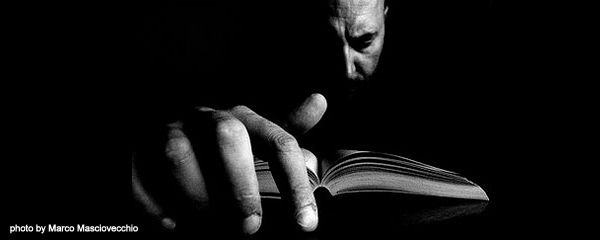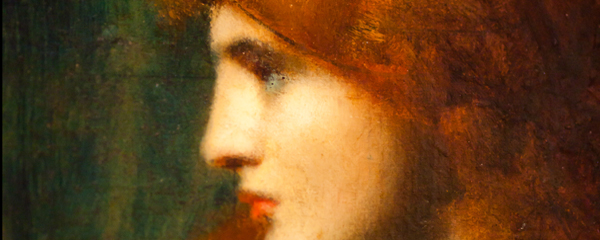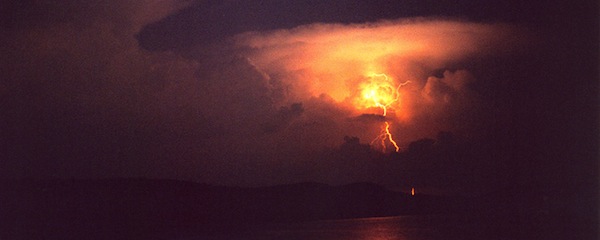
photo © Flowizm, 2003
by Marcella O’Connor
Polish-American writer Stuart Dybek was born in 1942 and raised in Chicago’s Little Village and Pilsen areas. He publishes both poetry and fiction and was an early champion of the flash fiction form: stories with a word count of less than one thousand words. Although flash fiction has gained recognition among writers themselves, criticism and theory have been slow to catch up and Dybek’s flash fictions are often relegated to the poetry section of literary magazines. However, his latest collection, Ecstatic Cahoots: Fifty Short Stories published in 2014, reclaims these flash fiction pieces, aligning them firmly with the short story rather than with poetry.
In a piece for The Atlantic, Dybek notes the lack of a place for flash fiction in established literary genres:
At the time, you could only publish very short prose works, something editors uniformly regarded as “prose poems”, in poetry magazines. So I sent my stuff out that way – because there was no other outlet for it – even though, deep down, I felt I was fudging.
Dybek narrates this editorial aversion to flash fiction in the past tense, but it is worth noting that three of the flash pieces collected in Ecstatic Cahoots – ‘Ransom’, ‘Between’ and ‘Wash’ – originally appeared in The Colorado Review, a publication that plainly states in its submission criteria that it does not publish flash fiction. This shows that flash fiction is still contested territory in literary culture.
Elizabeth Bowen proposed that the brevity of the short story form lends it a ‘concentration of vision’ comparable to painting. She further argued that, while novels must concern themselves with facts, short stories are like poetry, in that they have the potential to be visionary. Dybek adapts a strategy similar to Bowen’s in order to conceptualise flash fiction as a bridge between fiction and poetry: ‘Because I write both poetry and fiction, and have never built a wall between the two, my desire has always been to blur the line between the more established forms.’
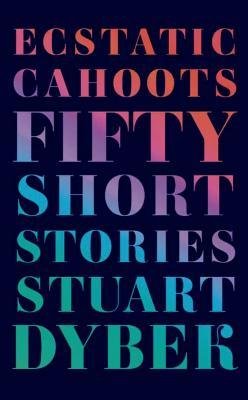 Instead of accepting a neat division between fiction and poetry, Dybek recognises that two literary impulses – the lyrical and the narrative – can be found in both fiction and poetry to varying degrees, with the lyrical element tending to be stronger in poetry, and the narrative impulse being more essential in fiction.
Instead of accepting a neat division between fiction and poetry, Dybek recognises that two literary impulses – the lyrical and the narrative – can be found in both fiction and poetry to varying degrees, with the lyrical element tending to be stronger in poetry, and the narrative impulse being more essential in fiction.
In Ecstatic Cahoots, Dybek demonstrates the potential of flash fiction to play with the balance of narrative and lyrical elements within the short story form. The collection opens with ‘Misterioso’, a story told in just two lines:
“You’re going to leave your watch on?”
“You’re leaving on your cross?”
This particular piece distils storytelling down to the barest minimalism. Through two speakers with one line of dialogue each, Dybek shows the reader the moment when different worldviews come into conflict with each other.
These lines of dialogue resurface in other stories in the collection. In ‘Marvelous Encounters of My Life’, the scene is filled out with more exposition:
“You’re going to leave your watch on?” she asks him, as if he’s guilty of an indignity on the order of disrobing down to all but his socks.
The narration then shifts back in time to the barroom encounter that leads these two characters to the moment when the dialogue takes place, providing answers to some of the questions posed by the sparseness of ‘Misterioso’. ‘Marvelous Encounters of My Life’ is one of the more traditional stories in the collection, but ends by returning to the original, unadorned lines of dialogue, giving the syuzhet a circular trajectory.
The lines appear again in ‘Naked’, a piece which then veers into absurdist territory:
“If you’re leaving on your Old Spice,” she says.
“If you’re leaving on your mascara,’’ he says.
“If you’re leaving on your road-rash whiskers,” she says.
“And then there’s your gypsy earrings.”
“I’ve put them in the wineglass,” she says.
“But you’ve left the holes in your earlobes behind.”
‘Naked’ is more concerned with the power of surprising images, rather than mimesis, which lends it a lyrical quality. The effect of including variations of a story in the book, one version realist and the other poetic, is the suggestion that different ontologies can coexist, despite their contradictions, without the need to privilege one truth over another. Dybek’s decision to return to two conflicting versions of the story further suggests that different modes of expression dictate the nature of the reality presented to the reader, that reality translated into literature is always a construct, in opposition to the realist idea that it is possible for writing to simply reflect reality.
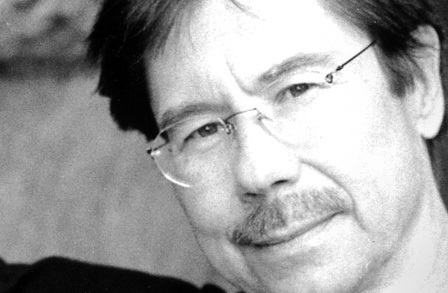 Dybek’s early work often draws from his Polish-American background to explore the concept of identity. Ecstatic Cahoots moves away from the Polish-American subject matter, but Dybek’s preoccupation with the pressures of time and space on identity persists. In many of these flashes, clothing stands in for the past, but the past is never quite finished and so continues to influence the present moment. In ‘The Start of Something’, Gil meets a woman on a bus who strikes up a conversation about his vintage pants, which leads to a discussion about their shared love of the Jazz Age. The narration asks, ‘Why not end here, without answers?’ before rushing into a future scenario in which Gil and the woman, Bea, travel to Italy, shop for vintage clothes together, and engage in World War One themed role play. Their life together becomes ‘[s]cene added to scene, fabrication to fabrication’.
Dybek’s early work often draws from his Polish-American background to explore the concept of identity. Ecstatic Cahoots moves away from the Polish-American subject matter, but Dybek’s preoccupation with the pressures of time and space on identity persists. In many of these flashes, clothing stands in for the past, but the past is never quite finished and so continues to influence the present moment. In ‘The Start of Something’, Gil meets a woman on a bus who strikes up a conversation about his vintage pants, which leads to a discussion about their shared love of the Jazz Age. The narration asks, ‘Why not end here, without answers?’ before rushing into a future scenario in which Gil and the woman, Bea, travel to Italy, shop for vintage clothes together, and engage in World War One themed role play. Their life together becomes ‘[s]cene added to scene, fabrication to fabrication’.
Eventually, in this hypothetical future, the woman starts using cocaine and cheating on Gil with a shady boyfriend who carries a gun, leaving Gil fearing for his life. It is unclear if this future will ever come into being or if it takes place entirely in Gil’s imagination. The narration is ambiguous on this matter and on other details, such as whether the woman’s name is actually Bea. It seems likely that nothing will come of the encounter, a possibility suggested earlier in the story:
Aren’t there chance meetings in every life that don’t play out, stories that seem meant to remain ghostly, as faint and fleeting as a reflection of a face on the window of a bus?
In the hypothetical future, Gil likes to strip Bea of her vintage clothes, but finds that ‘[n]o matter how many times he strips the past from her body, she finds a way to wear it again’. The story ends with the moment that was actually the beginning: when Gil finds the trousers at an estate sale:
His reflection, gazing back, fogged behind layers of dust, appeared ghostly… How could he have known then that he was only at the start of something?
This ending could add further ambiguity to whether Gil and Bea have a future together, or could be read as a self-reflexive moment in the text, since Gil’s reflection is as ‘ghostly’ as the face reflected on a bus window in the earlier passage about stories that never play out in real life.
In ‘Goodwill’, Gil and Bea engage in some erotically-charged shopping in a second-hand clothing store. It is unclear if this story is a variation on ‘The Start of Something’ or a sister story that works contiguously with it. The characters base their relationship around shopping for vintage clothes, so ‘Goodwill’ could be a chapter in the story mapped by ‘The Start of Something’. However, Gil and Bea are in Chicago rather than Italy, and there is no mention of the gun-carrying boyfriend. This narrative ambiguity is reflected in Bea’s relationship to the clothing of the past: ‘Goodwill might be a second-hand shop to some, but for Bea its racks hold fragmented histories waiting to be reanimated.’ To underscore the parallel being drawn between clothing and narratives of history, Bea tells Gil that her dresses are a kind of diary and the clothes collected throughout her life ‘hang like chapters of a shape-changing life’.
In ‘Goodwill’, as in the other stories of Ecstatic Cahoots, anachronisms accumulate until eras appear to be jumbled together in a present moment rather than ordered neatly across a linear timeline. The age that surfaces with the most vengeance, however, is the 1920s. Dybek’s constant allusions to this decade fit nicely with his stories’ rejection of a uniform sense of time in favour of experimentation, because his quirky handling of temporal atmosphere has its roots in the literary modernism of this period. Even the title, Ecstatic Cahoots – itself an allusion to The Great Gatsby – seems like a self-reflexive comment on time because ecstasy is, by its very nature, a fleeting emotion. Two minds can be in cahoots – such as when, in the act of reading, author and reader are in cahoots – but an ecstatic moment of connection is necessarily brief. And so the form of fiction best suited to enabling such an encounter is, of course, flash.
